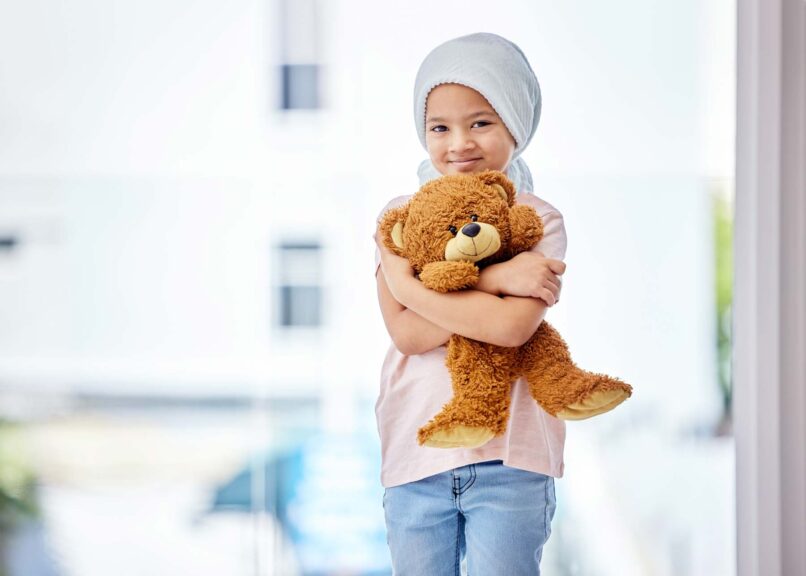
September is blood cancer awareness month. You may not be familiar with the phrase “blood cancer” but may know it by another name: leukemia.
Affecting the Young and Old
Leukemia occurs most often in adults aged 55 and older and, heartbreakingly, is the most common cancer in children under age 15.
Approximately 15,780 children between the ages of birth and 19 years are diagnosed with cancer each year in the U.S. Leukemia is the most common cancer diagnosed in children and adolescents younger than 20 years, accounting for 25.1% of all cancer cases in this age group. From 2015 to 2019, leukemia and lymphoma accounted for 37.9% of all cancer types in children and adolescents younger than 20 years.
What is Leukemia?
Leukemia is a cancer of the body’s blood-forming tissues, including the bone marrow and lymphatic system. It occurs when the DNA of a blood cell in the bone marrow mutates, causing the cell to grow and divide abnormally. Four main types of leukemia are classified based on how quickly they progress (acute vs. chronic) and the type of blood cell affected (lymphocytic vs. myeloid).
Acute Lymphocytic Leukemia (ALL) is the most common form of childhood leukemia, accounting for approximately 75-80% of cases. ALL affects lymphoid cells, which are a type of white blood cell. In ALL, the bone marrow produces too many immature lymphocytes called lymphoblasts, which crowd out healthy blood cells.
Acute Myeloid Leukemia (AML) is the second most common type, representing about 15-20% of childhood leukemias. It starts in the myeloid cells that usually develop into white blood cells (other than lymphocytes), red blood cells, or platelets.
Chronic Myelogenous Leukemia (CML) is rare in children, accounting for only about 2% of childhood leukemias. It is characterized by the presence of an abnormal gene called BCR-ABL, also known as the Philadelphia chromosome.
Chronic Lymphocytic Leukemia (CLL) is a type of blood cancer that affects white blood cells called lymphocytes. CLL is a slow-growing cancer that starts in lymphocytes in the bone marrow and spreads to the blood. It’s the most common type of leukemia in adults in Western countries, with the average age at diagnosis being around 70 years.
Is There a Cure?
There is currently no cure that can eliminate leukemia in all cases, with certainty that it will never return. However, many patients can achieve long-term remission, where there are no detectable signs of cancer, sometimes lasting for years or even decades. Treatments like chemotherapy, targeted therapies, immunotherapy, and stem cell transplants have greatly improved leukemia patients’ survival rates and remission lengths.
Treating Childhood Leukemia
For children with leukemia, researchers are focusing on several infused medications:
- Targeted therapies like imatinib and dasatinib for specific types of ALL and CML.
- Imatinib (Gleevec) is used for Philadelphia chromosome-positive ALL.
- Dasatinib (Sprycel) is another tyrosine kinase inhibitor for Ph+ ALL
- Sorafenib in combination with standard chemotherapy for AML with FLT3 gene changes.
- Larotrectinib for leukemia with specific NTRK gene alterations.
12Stone Health Partners: Specializing in Administering Childhood Infusions
There are several critical differences between administering infused medications to children and administering them to adults. A pediatric oncologist must calculate dosing, drug metabolism, and growth as children grow and develop quickly.
At 12Stone, our certified infusion techs have training in administering complex dosing. Pediatric patients require specialized equipment like smaller catheters, tubing, and infusion pumps for lower volumes. As children often find their treatments frightening, our friendly, compassionate and caring staff provide a reassuring atmosphere for children, caregivers, and family.
What’s more, 12Stone Health Partners provides a private space for delivering infusion treatments. WIFI allows young patients to be distracted by their treatment by watching their favorite cartoons or playing online games. Snacks and beverages are available for patients and accompanying caregivers. We do as much as possible to negate a hospital’s or clinical setting’s appearance, which can frighten a child. When treatments are done, we carefully monitor each child to ensure no side effects, and that the child is safe to leave.
Until there is a cure for childhood leukemia, 12Stone Health Partners will continue to administer leukemia-fighting treatments to patients, both young and old.
One more thing
The Magic Yarn Project provides whimsical, giggle-inducing character wigs and beanies that invite children into the world of imagination and play during difficult times. Thanks to generous donors, wigs are always free for the families who receive them.















